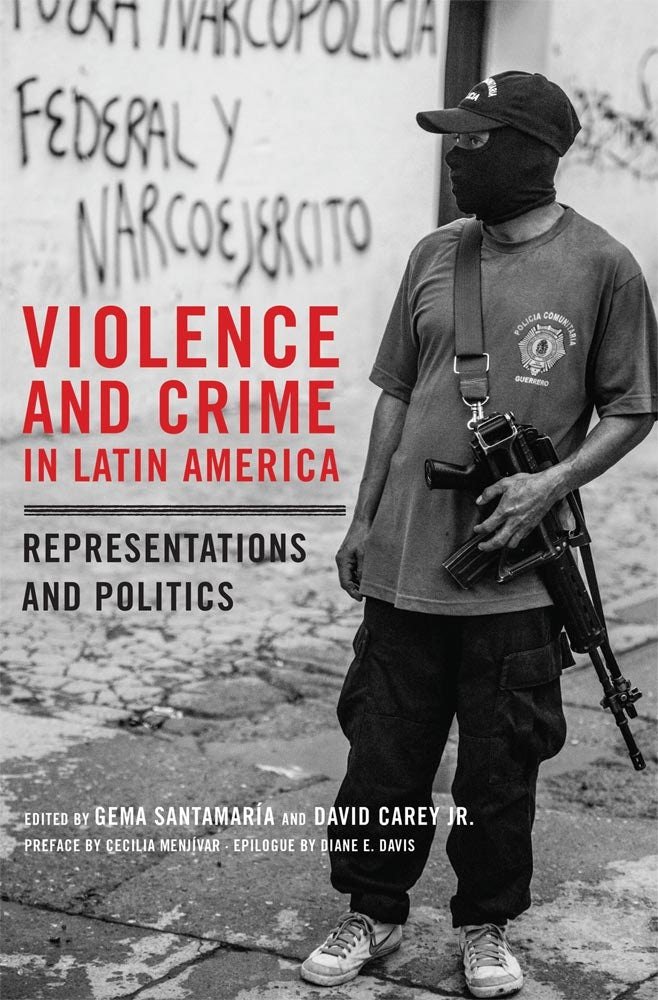Violence and Crime in Latin America: Representations and Politics, edited with David Carey Jr. (University of Oklahoma Press, 2017).
According to media reports, Latin America is one of the most violent regions in the world—a distinction it held throughout the twentieth century. The authors of Violence and Crime in Latin America contend that perceptions and representations of violence and crime directly impact such behaviors, creating profound consequences for the political and social fabric of Latin American nations.
Written by distinguished scholars of Latin American history, sociology, anthropology, and political science, the essays in this volume range from Mexico and Argentina to Colombia and Brazil in the twentieth and twenty-first centuries, addressing such issues as extralegal violence in Mexico, the myth of indigenous criminality in Guatemala, and governments’ selective blindness to violent crime in Brazil and Jamaica. The authors in this collection examine not only the social construction and political visibility of violence and crime in Latin America, but the justifications for them as well. Analytically and historically, these essays show how Latin American citizens have sanctioned criminal and violent practices and incorporated them into social relations, everyday practices, and institutional settings. At the same time, the authors explore the power struggles that inform distinctions between illegitimate versus legitimate violence.
Violence and Crime in Latin America makes a substantive contribution to understanding a key problem facing Latin America today. In its historical depth and ethnographic reach, this original and thought-provoking volume enhances our understanding of crime and violence throughout the Western Hemisphere.
Spanish TranslationViolencia y crimen en América Latina (Spanish Edition), edited with David Carey Jr. (Libreria CIDE, 2021)
Violencia y crimen en América Latina ofrece un análisis original e interdisciplinario sobre las razones históricas, culturales y políticas detrás de la actual crisis de inseguridad que afecta a la región.
A partir del análisis de las representaciones y los discursos sobre la violencia, este libro demuestra que ni las causas puramente económicas ni aquellas centradas en las fallas institucionales del Estado logran explicar la continuidad de la violencia y el crimen durante diferentes periodos históricos en América Latina.
A través de capítulos temáticos que cubren países tan diversos como Argentina, México, Brasil, Chile y Guatemala, a lo largo de los siglos XX y XXI, los autores argumentan que los debates públicos, las representaciones sociales y las luchas de poder son variantes centrales para entender por qué el Estado y los ciudadanos han aceptado y reproducido prácticas ilegales y violentas en el ámbito institucional, social y de la vida cotidiana.

